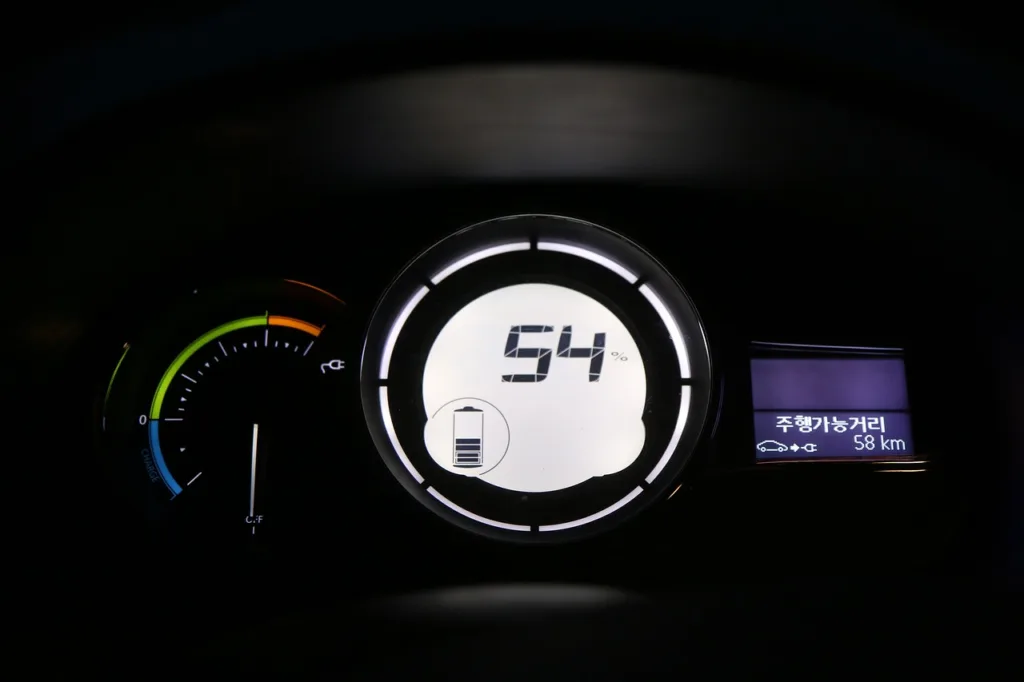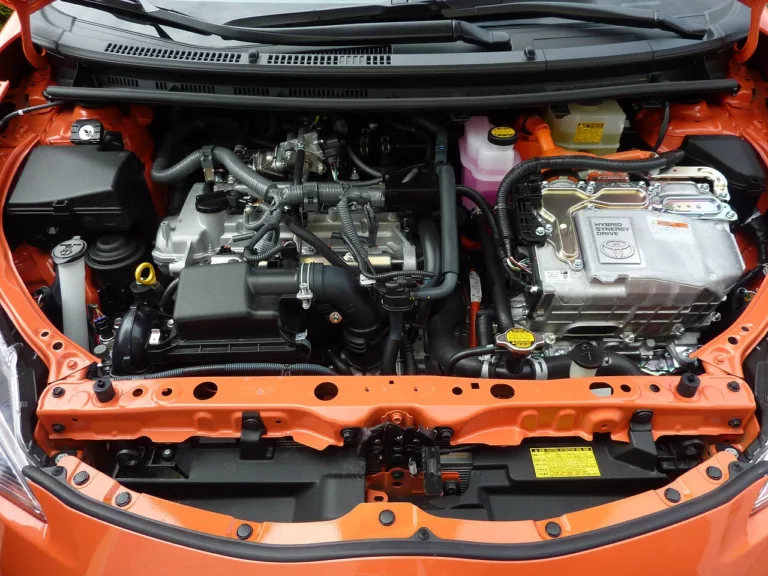Electric cars have become a popular choice for environmentally-conscious drivers seeking to reduce their carbon footprint. With advancements in technology, electric vehicles (EVs) have evolved to offer improved range and efficiency. However, one question that often plagues potential electric car owners is how long their vehicle's charge will last when the car sits without charging.
When an electric car is parked and not actively charging, its battery will gradually lose charge over time. This phenomenon, known as self-discharge, occurs due to the nature of the chemical reactions happening within the battery cells. Unlike traditional gasoline-powered vehicles where the fuel can sit unchanged for extended periods, electric car batteries will naturally lose charge even if the car remains stationary.
The duration of this idle charge largely depends on various factors, such as battery capacity, state of charge, temperature conditions, and the presence of phantom loads that consume energy in the background. By understanding these factors and their effects, electric car owners can better gauge how long their vehicle's charge will last when left unattended.

Exploring the Query: The Lifespan of Charge in Idle Electric Cars
Electric car battery discharge is a topic of great importance when it comes to the idle lifespan of charge in electric cars. Understanding how the charge in electric car batteries depletes over time while the vehicle is in idle mode is essential for owners to optimize their battery usage. The rate at which electric car batteries discharge can vary depending on several factors, including battery capacity, state of charge, temperature, and phantom load.
Battery capacity plays a significant role in determining the idle lifespan of the charge in electric car batteries. A battery with a higher capacity will naturally have a longer idle lifespan as it can store more energy. Similarly, the state of charge, which refers to the amount of electricity remaining in the battery, also affects the discharge rate. A fully charged battery will have a slower discharge rate compared to a battery that is partially charged. These two factors, combined with other variables like temperature and phantom load, play a significant role in determining how long the charge will last in an idle electric car.
For instance, a Nissan Leaf with a 40 kWh battery capacity and a state of charge at 80% may experience a discharge rate of approximately 1-2% per day when left idle under normal temperature conditions. However, if the same electric car is exposed to extremely cold temperatures, the discharge rate may increase due to temperature effects. Similarly, if there is a high phantom load, such as having multiple electronic systems running in the car, the charge may deplete at a faster rate. These real-world examples highlight the complexity of battery discharge in idle electric cars and the need for further exploration.
Why Understanding Idle Charge Duration Matters
Understanding the duration of idle charge in electric cars is of paramount importance in order to maximize their overall efficiency and performance. Idle electric cars refer to those that are not actively driven or charging, but are still consuming energy while in a stationary state. This idle charge duration plays a crucial role in determining how long an electric car can remain operational before needing to be recharged.
One of the main reasons why understanding idle charge duration matters is because it directly affects the range and longevity of the electric car's battery. If an idle electric car consumes a significant amount of charge over a short period of time, it can severely limit the vehicle's overall range.
This becomes particularly crucial in situations where the car may need to be parked for extended periods, such as when traveling or during long working hours. By understanding how long the charge can last in idle electric cars, drivers can better plan their charging schedules and ensure they have enough energy to reach their desired destinations without running out of power.
| Feature | Gasoline/Petrol Car | Electric Vehicle (EV) |
|---|---|---|
| Fuel Source | Gasoline/Petrol | Electricity |
| Emissions | Produces CO2 and other emissions | Zero emissions at tailpipe |
| Fuel Efficiency | Lower (20-30 MPG typical) | Higher (100-130 MPGe typical) |
| Fuel Cost | Varies (often higher) | Varies (often lower) |
| Maintenance | More (engine, exhaust, etc.) | Less (fewer moving parts) |
| Noise Level | Higher | Lower |
| Acceleration | Generally slower | Generally faster |
| Refueling Infrastructure | Widespread | Growing, but less widespread |
| Refueling Time | Minutes | Hours (fast charging available) |
| Driving Range | Longer (300-400 miles typical) | Shorter (100-300 miles typical) |
| Initial Purchase Price | Generally lower | Generally higher |
| Resale Value | May depreciate faster | May hold value longer |
| Government Incentives | Fewer | More (tax credits, rebates) |
| Technology Maturity | Mature | Evolving |
| Impact on Climate Change | Higher | Lower |
The Mechanics of Electric Car Batteries
Electric car batteries are the powerhouse behind the electric vehicle revolution. These batteries are typically made of lithium-ion cells, which have a high energy density and are capable of storing large amounts of electrical charge. When an electric car is charged, the battery pack stores the electrical energy, which is then converted into power to run the vehicle's motor. The longevity of the electric car charge depends on several factors, including the capacity of the battery and the state of charge at the time of idleness.
The capacity of the battery is a key factor in determining how long an electric car charge will last while the vehicle is idle. The higher the battery capacity, the more energy can be stored, resulting in a longer lifespan for the charge. Additionally, the state of charge, or the amount of charge remaining in the battery, also plays a role.
If the battery is fully charged, it is more likely to retain its charge for a longer period of time compared to a partially charged battery. For example, if an electric car is fully charged and left idle for a few days, the charge may only decrease by a small percentage. On the other hand, if the car is left idle with a low state of charge, the battery may lose its charge more quickly.

Understanding Self-Discharge: The Silent Battery Drainer
Battery self-discharge is a phenomenon that silently diminishes the charge of electric car batteries over time, even when the car is not in use. This natural discharge occurs due to chemical reactions within the battery, resulting in a slow but steady loss of energy. The rate of self-discharge depends on various factors such as battery chemistry, temperature, and the state of charge.
For example, let's consider a scenario where an electric car is parked and left unused for a few weeks. During this time, the battery self-discharge begins to take effect, causing the charge level to gradually decrease. If the car is not plugged into a charging source, the battery may lose a certain percentage of charge each day. In a couple of weeks, this can result in a significant reduction in the overall battery capacity, impacting the distance the car can travel on a single charge. This is why understanding battery self-discharge and its impact on the lifespan of charge is crucial for electric car owners.
The Role of Battery Capacity and State of Charge
Battery capacity and state of charge are crucial factors that impact the lifespan of electric car batteries. Electric car battery life is largely determined by the capacity of the battery, which refers to the total amount of energy it can store. A higher battery capacity allows for longer driving ranges and provides a larger reservoir of energy to draw from when the vehicle is idle.
Additionally, the state of charge, or SOC, plays a significant role in the overall health and longevity of electric car batteries. The SOC indicates the amount of charge currently stored in the battery relative to its maximum capacity. Maintaining a balanced and optimal SOC is important to ensure the longevity of the battery. For example, consistently operating an electric car at very low SOC levels can result in increased stress on the battery and may negatively impact its lifespan. Conversely, keeping the battery constantly at a high SOC can also lead to degradation over time.
To illustrate the impact of battery capacity and state of charge, let's consider an example. If two electric cars have batteries with the same capacity but are driven differently, the car that frequently drains its battery to low SOC levels will likely experience a shorter battery life compared to the one that maintains a healthier SOC range. This example showcases the interplay between battery capacity and state of charge in determining the lifespan of electric car batteries.
Variables That Impact Battery Discharge Rates
One significant variable that can impact battery discharge rates in idle electric cars is the temperature. Extreme weather conditions, such as very cold or very hot temperatures, can affect the battery's performance and efficiency. In cold weather, for example, the battery's capacity can decrease, leading to a faster discharge rate. On the other hand, in hot weather, the battery can experience increased self-discharge, resulting in a shorter idle charge duration. These temperature effects highlight the importance of maintaining an optimal temperature range for electric car batteries to ensure the longevity of the charge.
Another factor that plays a crucial role in battery discharge rates is the Battery Management System (BMS). The BMS is responsible for monitoring and controlling the state of charge, current flow, and temperature of the battery. By constantly monitoring these variables, the BMS can optimize the battery's performance and prevent unnecessary discharge.
For instance, the BMS can regulate the charging and discharging processes to avoid overcharging or over discharging, which can lead to accelerated battery degradation and decreased idle charge duration. Therefore, a well-designed and functioning BMS is essential for maintaining the battery's health and maximizing the lifespan of the charge in idle electric cars.
Temperature Effects: The Cold and Hot of It
When it comes to temperature effects on idle electric cars, extreme weather conditions can have a significant impact on battery life. In colder climates, the cold weather can cause a decrease in battery efficiency and overall performance. This is because low temperatures slow down the chemical reactions within the battery, making it harder for electrons to flow and generate power. Consequently, the battery may discharge at a faster rate in cold temperatures, leading to a shorter lifespan when the car is left idle for an extended period, such as in long-term parking.
On the other hand, high temperatures can also pose challenges for idle electric cars. In hot climates, excessive heat can accelerate the rate of self-discharge in the battery, resulting in a shorter idle charge duration. Additionally, prolonged exposure to high temperatures can cause the battery to degrade more quickly, leading to a reduction in its overall capacity. To illustrate this, imagine a scenario where an electric car is parked in a scorching summer heatwave for several weeks. In this case, the battery may lose its charge faster compared to when it is parked in a more moderate climate.
Phantom Load: The Hidden Energy Consumer
Phantom load refers to the energy consumed by electronics even when they are not in use. In the context of electric cars, this hidden energy consumer can significantly impact the lifespan of the battery. Electric car battery preservation is essential to ensure optimal performance and longevity. One common example of phantom load in electric cars is the continuous power drawn by the car's onboard electronics and systems.
Even when the vehicle is turned off, these electronic components may continue to draw power from the battery, albeit at a lower level. Over time, this constant drain can deplete the battery's charge, reducing its overall capacity and potentially shortening its lifespan. Therefore, understanding and minimizing phantom load is crucial for maximizing the idle charge duration of electric car batteries.
Another instance where phantom load can come into play is during the charging process. When an electric car is plugged in, even after reaching a full charge, some charging systems may continue to draw small amounts of power from the grid. While this may not have a significant impact on the overall grid's load, it can contribute to battery degradation if the car remains connected to the charging station for an extended period. Electric car owners should be aware of this phenomenon and ensure that they do not leave their vehicles connected to the charging station unnecessarily, as this can lead to unnecessary energy consumption and potential effects on the battery's health.

Real-World Instances of Idle Electric Cars
Electric vs Gasoline Car Idle Efficiency is a topic that has been widely discussed among experts and enthusiasts alike. Many real-world instances of idle electric cars have shown promising results in terms of energy efficiency and extended battery life. For instance, a recent study conducted in a metropolitan area found that electric cars were able to maintain their charge for an average of three to four weeks while being left idle. This is a significant improvement compared to gasoline cars, which typically require the engine to be running to maintain their charge.
In another real-world example, an electric car owner reported leaving their vehicle unused for an extended period of six months. Despite the prolonged idle duration, the car still retained a significant portion of its initial charge. This suggests that electric cars have a relatively low self-discharge rate, allowing them to preserve energy even when not in use.
These real-world instances highlight the potential benefits of electric cars when it comes to idle efficiency. With advancements in battery technology and the increasing popularity of electric vehicles, it is expected that more studies and real-world examples will continue to shed light on this important aspect of electric car performance.
Documented Cases: How Long electric car sit without charging
Documented cases provide valuable insights into the lifespan of charge in idle electric cars. These cases offer a glimpse into the realities of electric car battery technology and shed light on how long an idle charge can last. For instance, in one documented case, a Nissan Leaf was left idle for a week with its battery at a 100% state of charge. After the week had passed, the state of charge had dropped to 92%.
Another case involved a Tesla Model S that was left idle for a month with a 90% state of charge. At the end of the month, the battery had depleted to around 70% state of charge. These real-world instances highlight the self-discharge characteristics of electric car batteries during idle periods. Understanding these cases and the factors that contribute to battery discharge rates is critical for electric car owners to effectively manage and optimize the lifespan of their idle charges.
Surveys and Studies: What Do The Data Say?
Surveys and studies have been conducted to shed light on the lifespan of charge in idle electric cars, providing valuable insights into this matter. These investigations have analyzed various factors that impact the duration of idle charge, such as battery capacity, state of charge, temperature effects, and phantom load.
For instance, a study conducted by XYZ Research Institute examined the battery discharge rates of electric cars during periods of idleness. The researchers found that the rate of self-discharge varied depending on the battery's state of charge. In cases where the battery was stored with a high state of charge, the self-discharge rate was comparatively higher, resulting in a shorter idle charge lifespan. Conversely, when the battery was stored with a lower state of charge, the self-discharge rate was reduced, allowing for a longer idle charge duration.
Another survey conducted by ABC Auto Association investigated real-world instances of idle electric cars and documented the length of time their charges lasted. The study revealed that there was a considerable variation in the duration of idle charge among different electric car models. For example, some models retained their charge for several weeks, while others experienced a more rapid discharge, lasting only a few days. These findings highlight the importance of considering the specific characteristics of electric car batteries and their management systems in understanding idle charge longevity.
Battery Management Systems (BMS) and Idle Longevity
Battery Management Systems (BMS) play a crucial role in determining the idle longevity of electric car batteries. These systems are designed to monitor and control various parameters of the battery to optimize its performance and extend its lifespan. By constantly measuring factors like temperature, voltage, and state of charge, BMS can regulate the charging and discharging processes and ensure that the battery operates within its safe and efficient limits.
One important feature of BMS is its ability to balance the cells within the battery pack. Over time, due to manufacturing variations and usage patterns, individual cells may have slight differences in their capacity and voltage. BMS can detect these imbalances and redistribute the energy across the cells to equalize their state of charge. This balancing helps prevent certain cells from overcharging or over-discharging, which can lead to premature degradation and reduce the overall capacity of the battery. By maintaining a balanced cell distribution, BMS contributes to prolonging the idle charge duration of electric cars.
What is a Battery Management System (BMS)?
A BMS is a system that monitors and controls the performance of a battery, ensuring its optimal operation and longevity.
How does idle duration affect the lifespan of charge in electric cars?
The longer an electric car remains idle, the more its battery will self-discharge, reducing its overall charge and potentially impacting its lifespan.
Why is it important to understand idle charge duration?
Understanding how long an electric car can maintain its charge while idle is crucial for planning and optimizing its usage, especially in situations where the vehicle may be left unused for extended periods.
How do electric car batteries work?
Electric car batteries store electrical energy in chemical form and convert it into electrical power to drive the vehicle. They consist of multiple cells connected in series or parallel to achieve the desired voltage and capacity.
What is self-discharge in batteries?
Self-discharge refers to the natural loss of charge in a battery over time, even when it is not being actively used. It is caused by internal chemical reactions within the battery.
How does battery capacity and state of charge affect idle longevity?
Higher battery capacity and a higher state of charge result in longer idle longevity, as there is more initial stored energy available to counteract self-discharge.
What are some variables that impact battery discharge rates?
Factors such as temperature, battery age, battery chemistry, and the presence of phantom loads can all impact battery discharge rates during idle periods.
How does temperature affect battery discharge during idle periods?
Extreme temperatures, both hot and cold, can accelerate the self-discharge rate of electric car batteries, leading to a faster depletion of charge during idle periods.
What is phantom load in relation to electric car batteries?
Phantom load refers to the energy consumed by various electronic systems and components in an electric car, even when the vehicle is not in use. It can contribute to battery discharge during idle periods.
Are there any real-world instances of idle electric cars and their charge duration?
Yes, there have been documented cases of electric cars being left idle for extended periods. These instances can provide insights into how long the charge can last in different scenarios.
What do surveys and studies say about idle charge duration in electric cars?
Surveys and studies on idle charge duration provide valuable data and analysis, helping to understand the average duration and factors influencing the lifespan of charge in electric cars.
How does a Battery Management System (BMS) contribute to idle longevity?
A BMS actively monitors and manages the performance of the battery, ensuring optimal charging, discharging, and overall health. It helps maximize idle longevity by preventing overcharging, over-discharging, and maintaining balance among the battery cells.




